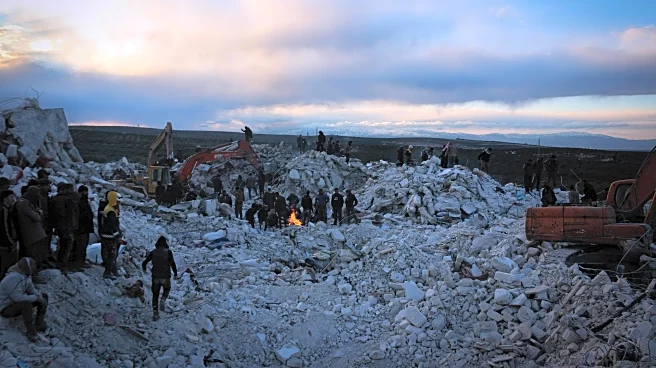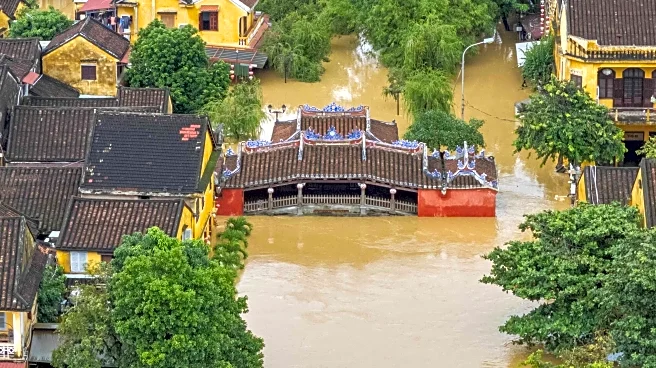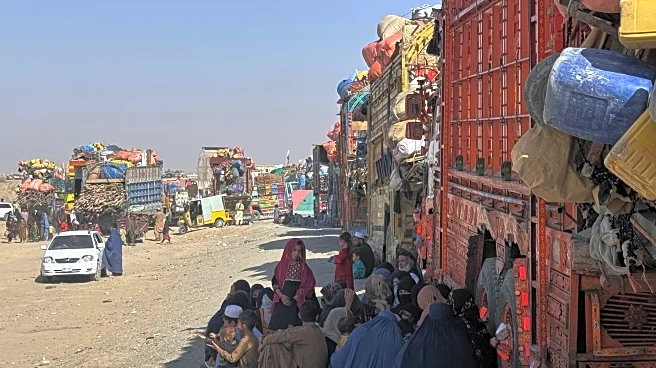What's Happening?
A powerful earthquake with a magnitude of 6.3 struck northern Afghanistan near Mazar-e-Sharif, resulting in at least 20 deaths and hundreds of injuries. The earthquake occurred at a depth of 17 miles and was marked at the orange alert level by the US
Geological Survey, indicating significant casualties are likely. The quake led to a power outage across the country, including in Kabul, due to damaged electricity lines from Uzbekistan and Tajikistan. Rescue efforts are ongoing, and the death toll is expected to rise as authorities continue to assess the damage.
Why It's Important?
The earthquake highlights Afghanistan's vulnerability to seismic events due to its location on fault lines where the Indian and Eurasian tectonic plates meet. The impact is exacerbated by the country's infrastructure, with many buildings made of mud and timber, making them susceptible to collapse. The disaster poses a significant challenge to the Taliban government, which is already dealing with economic and humanitarian crises. The international community may need to provide aid and support to help Afghanistan manage the aftermath and rebuild affected areas.
What's Next?
As rescue operations continue, the focus will be on providing immediate relief to the affected population, including medical assistance and temporary shelter. The Taliban government is likely to seek international aid to support recovery efforts. The earthquake may prompt discussions on improving building standards and disaster preparedness in Afghanistan to mitigate the impact of future seismic events.
Beyond the Headlines
The earthquake could have long-term implications for Afghanistan's stability, as it may exacerbate existing socio-economic challenges. The need for international aid could influence Afghanistan's diplomatic relations, potentially affecting its geopolitical standing. Additionally, the disaster may highlight the importance of investing in infrastructure resilience in earthquake-prone regions.

















